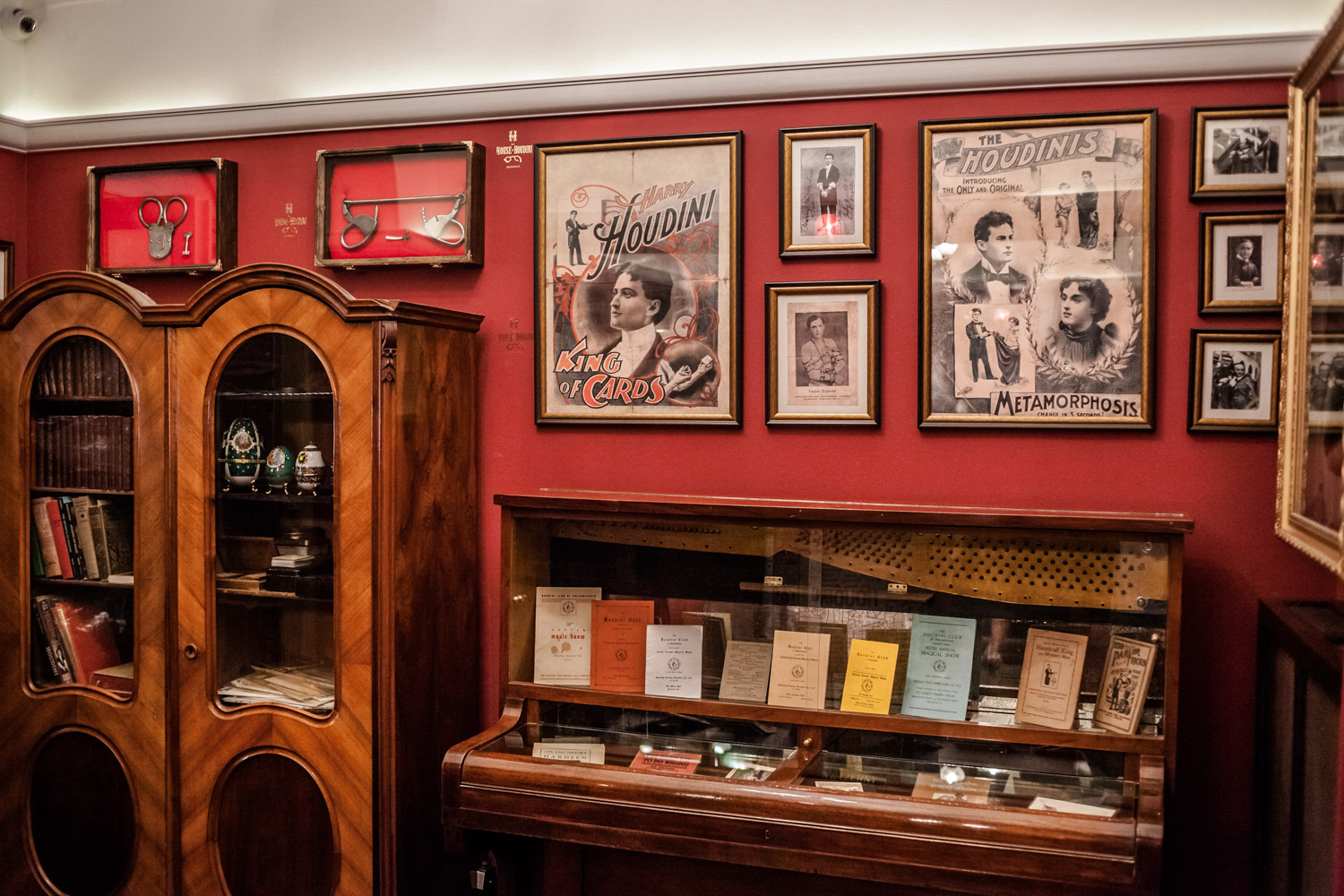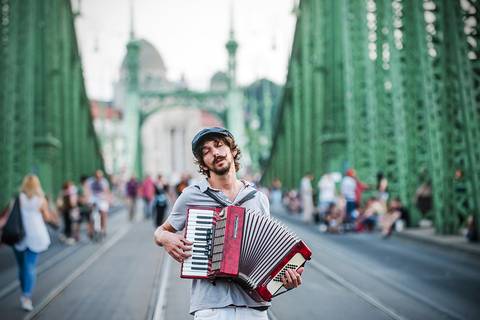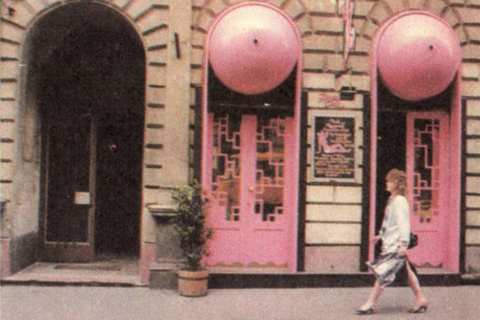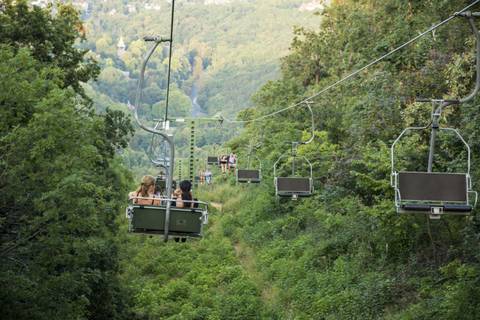Concealed amid Buda’s cobblestoned Castle District, a freshly added attraction honors one of history’s greatest illusionists – Budapest-born Harry Houdini – with a magical collection of antiquated handcuffs and lock keys that once belonged to the Hungarian escapologist, alongside authentic vintage posters promoting his stunning shows, and several original props from the recent Houdini miniseries on the History Channel. Those who enter this mysterious museum vanish into an enchanted environment that pays proper tribute to the most accomplished escape artist and stage magician of all time.
Found within the Castle District’s graceful settings on the ground level of a classic two-story house on Dísz Square, The House of Houdini Budapest effortlessly blends into its surrounding environment with its massive wooden doors, stylish stone arch, and gold-hued inscription mounted above the entrance. As we step through the gate, we find ourselves in a covered inner passageway that drives us to the door of the exhibition hall. Before progressing into the museum, we marvel at the massive Chinese Water-Torture Cell placed near the entrance, an installation similar to the gigantic tank that was used in Houdini’s perplexing underwater performance – but now, instead of water, the glass container is filled with 52 garden-fresh red roses to commemorate Houdini’s untimely passing at the age of 52.
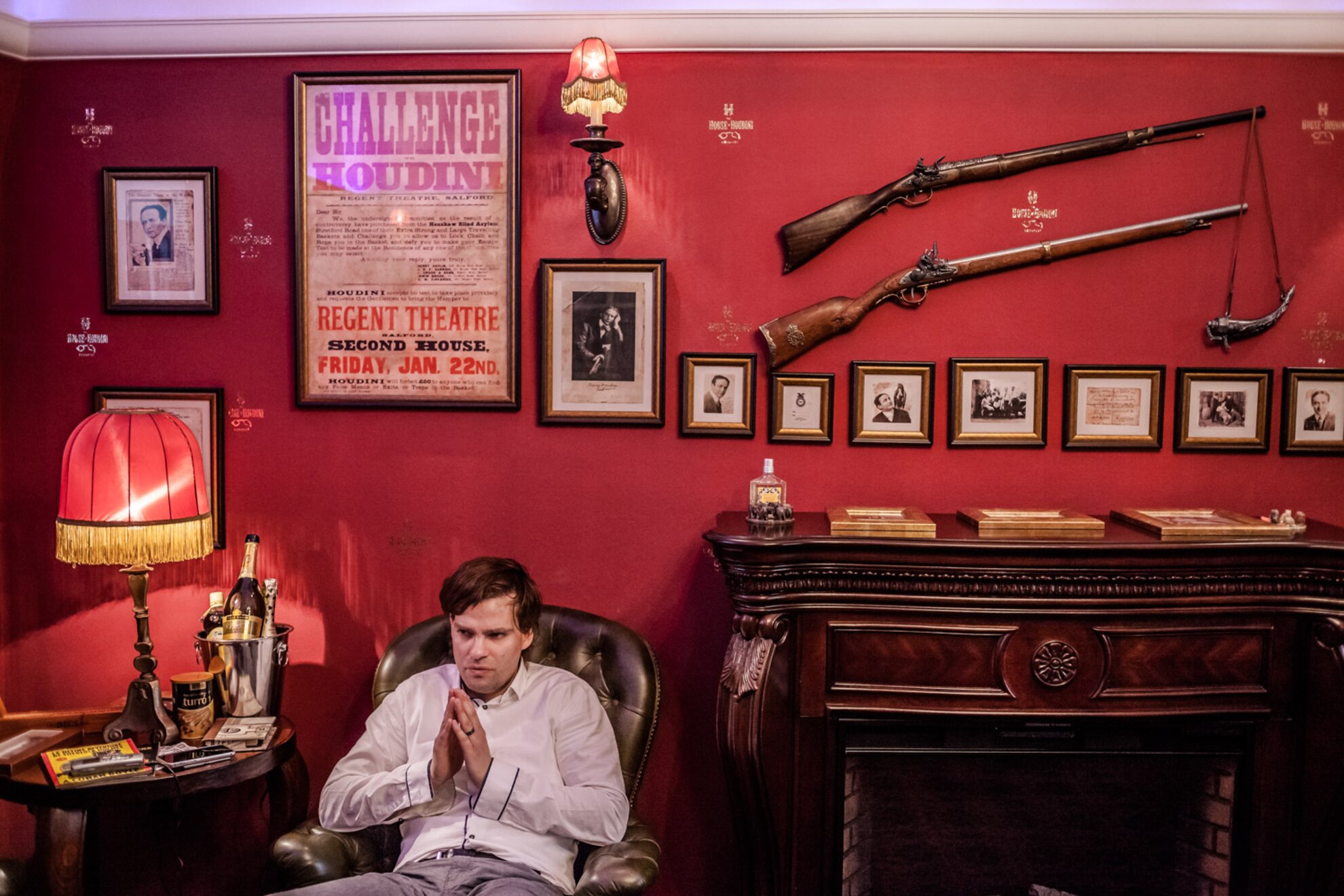
As we head indoors to leave the ordinary behind, the founder of the museum, modern-day Hungarian magician David Merlini, appears abruptly in front of us from behind an antiquated bookshelf, and greets us with a mystical smile. Merlini – himself a renowned escape artist performing spectacular and oftentimes terrifying stunts around the world, and who was a consultant for the recent History Channel miniseries about Houdini’s life – ushers us inside to reveal the fascinating collection of Houdini-related treasures that he has been accumulating for the last 17 years, now on public display to make this museum the first of its kind in Europe.

From the reception hall we head towards a locked metal door, and Merlini explains that this prodigious portal opens only after visitors decode the Entrance Arcane found on the admission pass.
This puzzling activity that challenges visitors even before the tour starts just enhances the mystery of the place – especially as it must be solved in front of the staring eyes of a Houdini wax sculpture. Once we crack the playful puzzle (and our readers may forgive that we can’t provide any hints about the accurate answer) and the door opens wide, we journey into a dark chamber to gain in-depth information about the first 26 years of Harry Houdini’s life through multiple inscriptions displayed in English, while we admire several of the artist’s personal items on view, like his Hungarian birth certificate – this biographical expedition starts in the year 1874, when Houdini was born in Budapest’s District VII. During our time inside this concealed compartment, we learn about the young Houdini’s relocation to the United States at the age of four, and we get glimpses of his uneasy childhood, his rugged career path, his early inspirations, and his aspirations to become an illusionist.Once we pass this informative introduction room, we continue our tour in the exhibition halls, where we encounter an overwhelming collection of Houdini’s tools that he used during his escape shows, including century-old handcuffs and multiple keys, all presented amid an ornate milieu of scarlet walls featuring original posters that once promoted Houdini’s legendary performances. We spend some time observing one of these announcements about the renowned “Metamorphosis” show, a stage illusion performed by Houdini and his wife, where the escapist would lie handcuffed locked inside a trunk, before somehow switching places with his wife, who would stand outside the box. Houdini’s personal letters, black-and-white portraits, and vintage newspaper articles published about the magician complement this extraordinary display, alongside numerous original props used during the filming of the History Channel’s “Houdini” miniseries, starring Oscar-winning actor Adrien Brody portraying the life of the legendary illusionist and escape artist as he rose from poverty to worldwide fame. The entire movie is on view inside the museum’s elegant lounge accessible from the exhibition hall – kitted out with a wooden-framed fireplace, period furniture, and a sturdy, century-old safe, making this sophisticated section of the museum reminiscent of a 100-year-old cigar salon.After carefully observing all of the prestidigitation pieces on display, those who are up for watching some bewitching wizardry can attend a mini magic show at the museum’s theater, where qualified conjurors show off incredible illusions through diverse tricks with packs of cards, a simple silk scarf, a banknote, or plain ropes. After this playful performance we are ready to get back to reality, but just before emerging to the outside world, we inquisitively stop in front of Houdini’s enigmatic shadow mounted on the wall at the exit door, where he has one last trick in store for us – we won’t spoil the surprise, but this small twist to conclude this awe-inspiring trip certainly makes us feel as if we were experiencing paranormal forces. Nonetheless, as we say goodbye, Merlini makes a final promise that those who enter here won’t disappear…

Admission to the museum costs 1,800 forints for adults and 1,350 forints for children under age 11, and guided tours are available in the English, Italian, and Hungarian languages. The museum is open for visitors every day from 9:30am to 7pm.
Address: Budapest 1014, Dísz Square 11 Website
